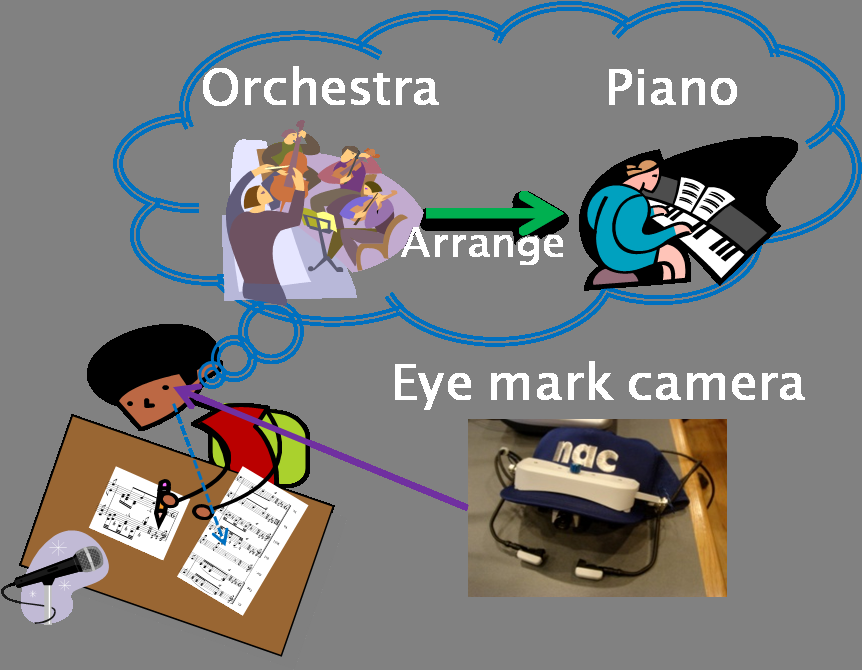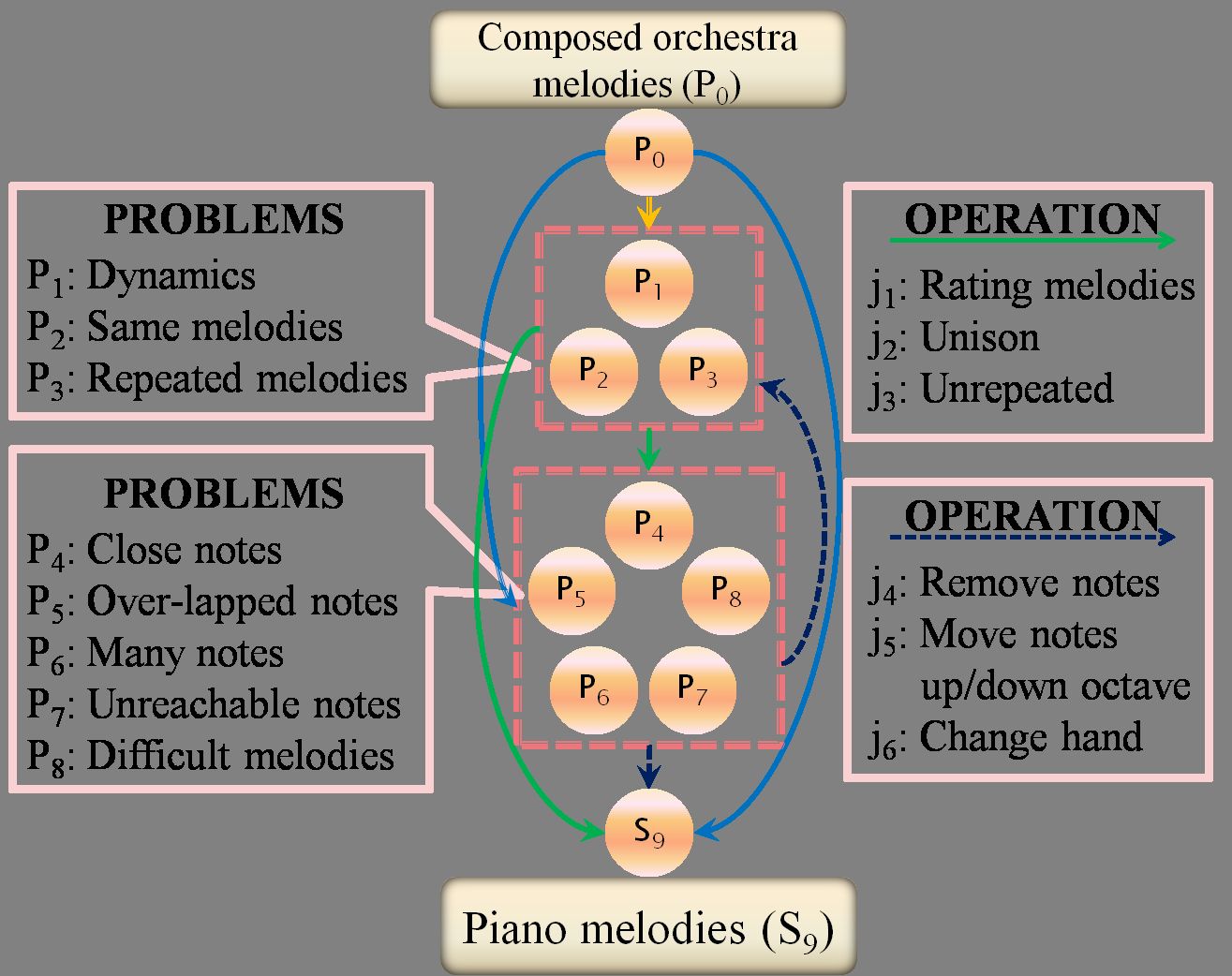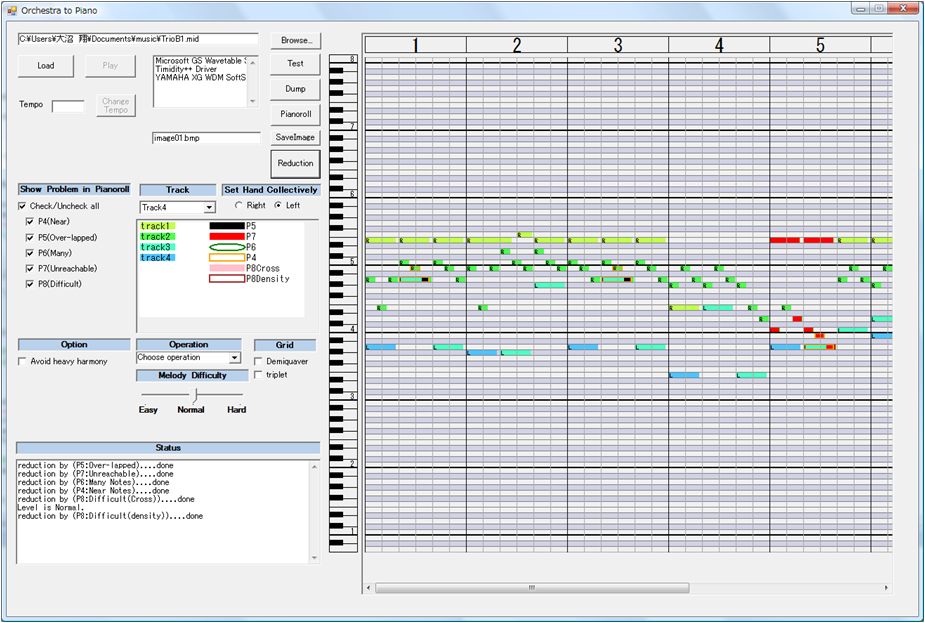Our goal is to construct an automatic musical arrangement system by applying analysis results of composers’ arrangement processes. We arranged an orchestral score for a solo pianist to evaluate our system. Usually, an orchestral score has several instrumental parts, which is difficult for a soloist to play. Therefore, an orchestral score needs to be arranged with several instrumental parts into both hands parts, which enables a solo pianist to play with both hands. However, there is a problem with an arrangement of more than five notes for each hand, since one hand has only five fingers. To solve this problem, we introduce a protocol analysis for analyzing the process of arranging music. We applied this protocol analysis to a musical arrangement, and analyzed the arrangement process. By using the analysis results, we constructed a piano arrangement system for warning the composer of problems in the score that need to be arranged.
We constructed a piano arrangement system by applying protocol analysis of composers’ arrangement process. In the think-aloud protocol analysis, we recorded the composers thinking-aloud and visual points, and we determined nine problems and six operations in the arrangement process. Using the result of the analysis, we constructed a piano arrangement system. There are exactly same points that a musician arranged and system warned, and musical novice enable to choose from several arrangement processes.

▲Figure1: Recording of Musical Arrangement System
 ▲Figure2: State-Transition Model
▲Figure2: State-Transition Model
 ▲Figure3: Overview of Piano Arrangement System
▲Figure3: Overview of Piano Arrangement System
References
- Sho Onuma, Masatoshi Hamanaka: PIANO ARRANGEMENT SYSTEM BASED ON COMPOSERS’ ARRANGEMENT PROCESSES, Proceeding of International Computer Music Conference 2010, pp.191-194, 2010. [PDF]
- 中 野倫靖, 大沼翔, 金泰憲, 黒沢佳史, 斉藤優理, 斎藤佳紀, 奥村健太, 田中駿二, 浜中雅俊, 帆足啓一郎, 森山剛, 吉田周平, 吉谷幹人, 安藤大地: “デモンストレーション:音楽情報処理の研究紹介IX”, 情報処理学会 音楽情報科学研究会 研究報告 MUS86-21, July 2010. [PDF]
- 大沼翔, 浜中雅俊: “編曲作業の時系列分析‐オーケストラ譜からピアノ譜への変換”, 情報処理学会全国大会, 09-IPSJ-71-2, pp.2.227-2.228, March 2009.